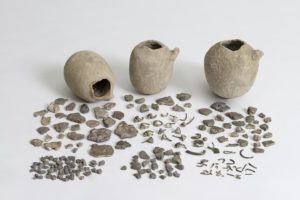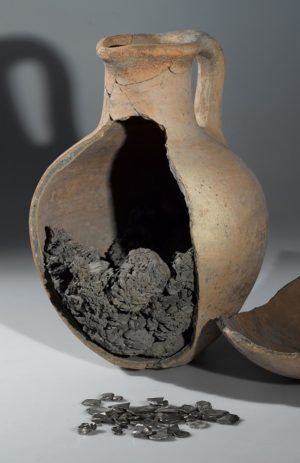
PROCEEDINGS OF THE NATIONAL ACADEMY OF SCIENCES—A study* finds that lead isotopes in Phoenician silver artifacts chart a course of exploration and expansion into Europe and Asia in the 10th and 9th centuries BCE. Phoenician expansion throughout the Mediterranean in the first millennium BCE is a significant cultural inflection point in the history of northern Africa, southern Europe, and the Levant. The reason for the Phoenician expansion is a subject of debate. Tzilla Eshel, Yigal Erel, and colleagues analyzed lead isotopes in silver artifacts from four hoards of Phoenician silver dating to the 10th and 9th centuries BCE. The lead impurities in the silver are an artifact of the silver production process and can identify the metal’s source region. In connection with archaeological studies, the authors found that the silver in the artifacts came from regions in Anatolia, Sardinia, and the Iberian Peninsula, with the oldest artifacts identified as Anatolian and the most recent artifacts as Iberian. The results outline a temporal and geographic progression of the Phoenician quest for silver, including the acquisition of silver production methods in Anatolia and a shift to almost exclusive use of Iberian silver in the course of the 9th century BCE. According to the authors, the results suggest that the search for silver established pre-colonization contacts between Phoenicia and the West, and that silver was likely the driving force behind the Phoenician expansion in the Mediterranean.
______________________________

The Ein Hofez silver hoard. Image courtesy of Warhaftig Venezian (photographer) and the Israel Antiquities Authority.”
______________________________

The Dor silver hoard. Image courtesy of the Tel Dor Expedition, the Bulletin of the American Schools of Oriental Research, Ardon Bar-Hama (photographer), and the Israel Museum.
______________________________
Article Source: A PNAS news release







